CHAPTER 24
Gardens for science
Summary
The history and roles of botanic gardens, especially in the United Kingdom, the Royal Horticultural Society’s garden at Wisley, and the public in the curation of plant collections, in the study of botany, horticultural plant science and conservation, and in the dissemination of knowledge about plants, are described. A list is provided of publicly funded research institutes also engaged, directly or indirectly, in horticultural science research. The significance of university research is emphasised.
Introduction
It is fitting that this book, which deals with the scientific principles and knowledge that relate to the practice of gardening, includes a short account of the specialist gardens and associated institutions devoted to the cultivation and curation of plant collections, to the study of plant science and conservation, and to botanical and horticultural education and training. They form a very diverse group and have played a major role in advancing knowledge of plants relevant to horticulture, in the introduction and breeding of new garden plants, in training new professionals and in promoting education about plants in schools and among the wider public.
Botanic gardens
European origins and development in the United Kingdom
Botanic gardens were the earliest scientific gardens in Europe. The first was set up in Pisa in 1543, then in Padua in 1545, followed by Florence, Bologna, Pavia, Leipzig and then Leiden, in 1590. Botanic gardens did not appear in Britain until 1621, when one was laid out at Oxford, followed by Edinburgh (1670), the Chelsea Physic Garden (1673) and Glasgow (1705). All these gardens, during their early years of existence, were physic gardens, in which medicinal and poisonous plants were grown as reference collections for medical students. This early function, in which the emphasis was on the correct identification of plants, set the pattern of research in botanic gardens thereafter. With the exception of the Chelsea Physic Garden, which was run by the Worshipful Society of Apothecaries, all were attached to the medical schools of universities.
As time went by, the curators of the botanic gardens, perhaps feeling restricted in their gardening by the needs of medicine, began to acquire a much wider range of plants to grow, in part to increase the attractiveness of their gardens, but also to demonstrate plant diversity. ‘Rare’ and ‘exotic’ plants were especially prized. With the gradual dissociation of the study of botany from medicine in the late eighteenth and early nineteenth centuries, botanic gardens devoted to the study of plants and plant diversity in their own right were established in other universities: Cambridge in 1760, Glasnevin (Dublin) in 1796 and thereafter in other universities in the United Kingdom and around the world throughout the nineteenth and twentieth centuries. The first UK botanic garden, at Oxford University (Fig. 24.1), is still involved in teaching and research, as also are many of those that came later. The botanic garden in Cambridge is particularly interesting, for it was originally laid out by John Henslow (1796–1861), Charles Darwin’s mentor and teacher, to demonstrate plant diversity among and within species. Many of Henslow’s plantings are still there to be seen and interpreted, and are currently providing the basis for much research on the thinking of both Henslow and Darwin on plant diversity and its origins. Regrettably, in many places, especially in the United Kingdom, university botanic gardens are now under financial pressure, partly because they require long-term funding, which universities are often unable to provide. Many, however, continue to thrive and to play important roles in research, teaching and outreach to the wider public. They are all well worth visiting and deserve support. The internet has provided new opportunities for university botanic gardens to record their activities and most now have active websites. Some, however, such as those at the University of Connecticut in the United States and at the University of Reading in the United Kingdom have taken electronic communication even further by providing internet access to their collections via WiFi provision that ties in with taught courses, as well as providing additional public engagement (Fig. 24.2).
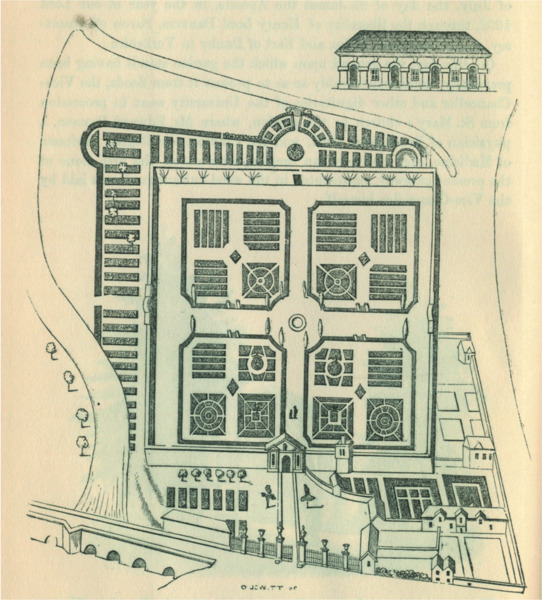
Figure 24.1 Oxford University Botanic Garden, plan c. 1670. Photograph courtesy of the Royal Horticultural Society, Lindley Library.
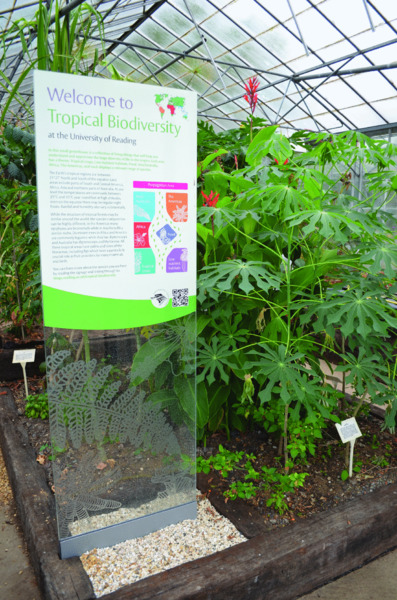
Figure 24.2 The Tropical Biodiversity glasshouse at the University of Reading integrates online resources with the living collections via dedicated WiFi provision. Photograph by Alastair Culham.
The Royal Botanic Garden Edinburgh, together with its three specialist gardens at Benmore in Argyll, 24.1 Logan in Dumfries and Galloway, and Dawyck in Peebleshire, moved in the 1950s from the care of the University of Edinburgh to that of the Scottish Office (later the Scottish Executive and then the Scottish Government). Now, as the national botanic garden of Scotland, it holds major collections of plants and pursues an international programme of research, conservation, education and training.
The Royal Botanic Gardens, Kew, is the largest state-funded botanic garden in the United Kingdom. The origins of this garden were quite different from those already mentioned, for it was founded in 1753 by Princess Augusta, and continued for many years as a royal garden, only later being taken into state ownership. The Royal Botanic Gardens, Kew, has always had a significant role to play in the formulation and implementation of UK state policies relating to plants. It was especially influential in the development of the natural resources of the British Empire, the introduction of commercial crops to the ‘colonies’, and in the compilation of colonial floras (see below). Currently, among many other initiatives, it plays a worldwide role in the development of modern approaches to plant classification and evolution (systematics), and in conservation. It has important programmes of botanical and horticultural training and education, and plays a leading role in the drafting and implementation of international conservation treaties and conventions.
The nineteenth century saw the establishment in Britain of botanic gardens that were quite different from their predecessors. These were not associated with universities, having been funded by private botanical and horticultural societies whose members were amateurs rather than professionals. Such societies were largely self-financing, and were established to promote, through their botanic gardens, botany and horticulture as prestigious recreational activities among wealthy middle-class subscribers such as doctors, lawyers and those engaged in commerce and industry. The gardens were also landscaped, to provide an attractive amenity. The private botanic gardens gave subscribers access to the wealth of new plant introductions flooding into the United Kingdom as a result of the activities of plant collectors, as yet unavailable for growing by private individuals other than the very wealthy. Among the private botanic gardens were those at Liverpool (1802), Hull (1812), Glasgow (1817), Kensington (1818; later Chiswick, the London Horticultural Society Garden), Edinburgh (1820; the Caledonian Horticultural Society Garden), Manchester (1829), Belfast (1829), Birmingham (1832), Bath (1834), Sheffield (1836), Leeds (1840) and Regent’s Park (1841; the Royal Botanic Society of London Garden). The Birmingham Botanical Garden is a fine example of this type of botanic garden and, although many of the others founded at the same time still exist, is the only one still thriving in private ownership (see ‘Further reading’).
State, university and charitably funded botanic gardens have since been set up around the world, liaising closely with one another in the fields of plant research, conservation, education and training. Botanic Gardens Conservation International (BGCI), a charity founded in 1987 and based in Richmond, near London, plays a seminal role in promoting such cooperation (Table 24.1) between botanic gardens worldwide.
Table 24.1 Significant recent documents published by Botanic Gardens Conservation International, Richmond, UK
| Books and manuals |
| Akeroyd, J. & Wyse Jackson, P.S. (1995) A Handbook for Botanic Gardens on the Reintroduction of Plants to the Wild. Available at: http://www.botanicgardens.eu/downloads/Handbookonreintroduction.pdf |
| Anon. (2006) The Gran Canaria Declaration II: Climate Change and Plant Conservation (with Cabildo de Gran Canaria, Spain). Available at: http://www.bgci.org/ourwork/gcdccpc/ |
| BGCI (2012) International Agenda for Botanic Gardens in Conservation, 2nd edn. Botanic Gardens Conservation International, Richmond, UK. Available at: http://www.bgci.org/files/Worldwide/News/SeptDec12/international_agenda_web.pdf |
| Convention on Biological Diversity (2011 onwards) Global Strategy for Plant Conservation. Available at: https://www.cbd.int/gspc/about.shtml |
| Leadlay, E. & Green, J. (1998) The Darwin Technical Manual for Botanic Gardens. |
| Oldfield, S. & McGough, N. (2007) A CITES Manual for Botanic Gardens, 2nd edn. Available at: http://www.bgci.org/ourwork/citesmanual/ |
| Waylen, K. (2006) Botanic Gardens: Using Biodiversity to Improve Human Wellbeing. Available at: http://www.bgci.org/files/Worldwide/Wellbeing/Presspack/wellbeing.pdf |
| Willison, J. (1994) Environmental Education in Botanic Gardens. Available at: http://www.bgci.org/education/1619/ |
| Willison, J. (2006) Education for Sustainable Development: Guidelines for Action in Botanic Gardens. Available at: http://www.bgci.org/education/ESD_Guidelines/ |
| Journals |
| Leadlay, E. & Oldfield, S. [journal editors] BG Journal (Journal of Botanic Gardens Conservation International). See: http://www.bgci.org/resources/bgjournal/ |
| Willison, J. & Kneebone, S. [journal editors] Roots (Botanic Gardens Conservation International Education Review). See: http://www.bgci.org/education/roots/ |
The newest botanic garden in the United Kingdom is the National Botanic Garden of Wales, at Llanarthne, Carmarthenshire. Established in 2000 as a Millennium project, it had a faltering start, but now has a clear focus on the in situ conservation of Welsh native plants and the ex situ conservation of southern hemisphere plants. It is also notable for its sustainable infrastructure, which gives it an excellent environmental footprint.
Another major Millennium garden is the Eden Project in Cornwall. Although not a botanic garden in the strict sense, it has important education and training roles and has developed a programme of conservation work, notably in the Seychelles and Thailand.
Collections
The importance of botanic gardens lies in the fact that they are the holders of collections of living plants, ideally, but not always, sourced from the wild. These collections have been built up for various purposes – medicine, education, display, conservation and so on – but all are supported by documentation concerning the origins of the plants that comprise them. The importance of such documentation cannot be overemphasised, yet it is not always as complete as it could and should be. Most botanic gardens have glasshouses (Fig. 24.3), and many have outstations with different climatic and soil conditions, thereby increasing the range of plants that may be grown in the collections. Some also have seed banks.
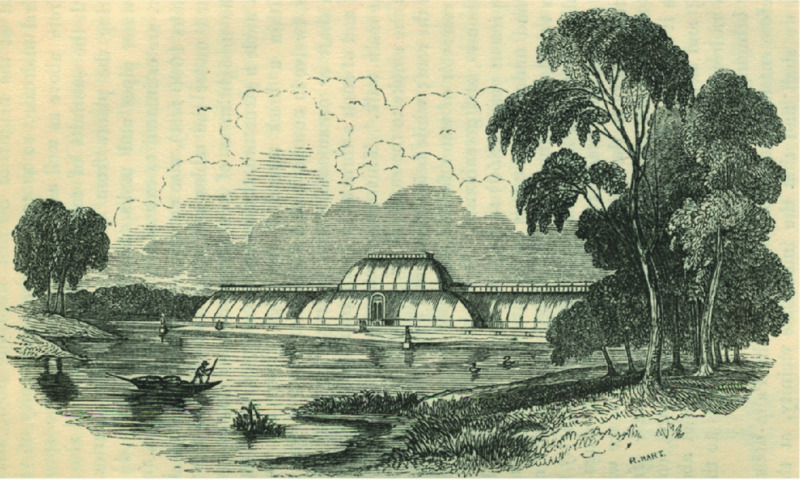
Figure 24.3 The Palm House at the Royal Botanic Gardens, Kew, c. 1850. Photograph courtesy of the Royal Horticultural Society, Lindley Library.
The collections of certain species, notably those represented in the 1997 Red List of Threatened Plants published by the International Union for the Conservation of Nature (IUCN), may be important conservation resources. There are, however, risks of hybridisation and introduction of new diseases when plants are held in cultivation for long periods. The holding of endangered plants for conservation purposes in a collection at some distance from the natural habitat of the species concerned is called ex situ conservation. The value of ex situ collections is greatly increased if they include several accessions, obtained from several different sites, thereby representing a high level of genetic diversity. This is rarely the case with older collections, although those of several botanic gardens may, together, include sufficient diversity if the specimens were obtained from different sources. New collections, especially seed banks established specifically for ex situ conservation, such as the Millennium Seed Bank at the Royal Botanic Gardens, Kew, have taken great care to build infraspecific genetic variation into their accessions.
Most botanic gardens now have accession and deaccession policies, which ensure a clear focus for their collections (see Leadlay & Greene (1998) in Table 24.1). This prevents overlap and enables individual institutions to hold much more representative collections of their specialisms than would otherwise be the case, but increases the unpredictable risk of loss of whole taxonomic groups. Sometimes the specialisation is in plants of particular families or from particular countries, for example Rhododendron spp. and plants from China and Asia in the case of the Royal Botanic Garden Edinburgh (Fig. 24.4). Alternatively, some collections focus on native plants of the region or country in which they are situated, or on plants of local or international conservation value.
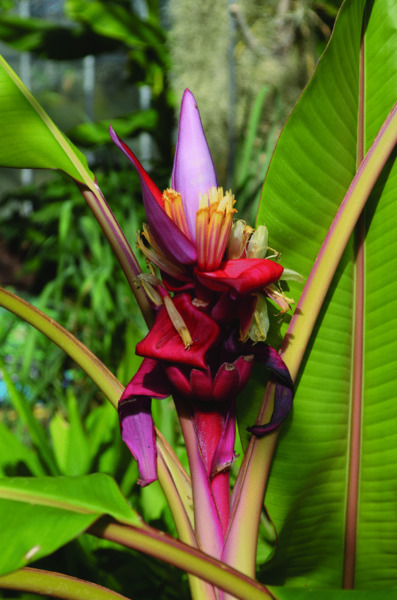
Figure 24.4 A flowering and fruiting specimen of Musa dasycarpa, a pink-fruited species of banana originating in northern India and Myanmar that forms part of the tropical crops teaching collection at the University of Reading. For further details of the taxonomy of this species see Häkkinen, M. & Väre, H. (2008) Journal of Systematics and Evolution, 46, 230–5. Photograph by Alastair Culham.
The details of botanic garden collections are now normally held in sophisticated computer databases specifically designed for the purpose. This greatly facilitates the production of informative labels (see Chapter 4), an essential feature of plants displayed in botanic gardens, and the production of plant lists, online and in book form, which can be made available to scientists around the world. Plant collections can also make their lists available for search via the BGCI Plant Search to facilitate scientific exchange.
The plants contained in botanic garden collections should not be regarded as being ‘owned’ by the parent institutions, but are an international resource that can and should be made available to all engaged in legitimate scientific study and conservation. The return (repatriation) of plant or seed collections, (germplasm collections), and data derived from them, to the countries in which the collections were first made, is now seen as an important activity. Whether they should be exploited for commercial purposes by collection holders or others, and what proportion of the profits arising from such activities should be returned to the countries of origin, is currently a matter of vigorous debate and international legislation. The value of living collections of plants, for breeding purposes, for use in horticulture, or as a source of novel compounds for use in the pharmaceutical industry, is immense.
Living collections may be displayed to:
- provide an amenity, as in the private botanic gardens of the nineteenth century;
- show how plants are related and classified, as was traditionally the case with university botanic gardens;
- illustrate plants from different countries (phytogeography);
- more recently, to convey ecological or conservation messages by representing plants growing in the wild in particular locations;
- some combination of the above.
Whatever the reasons for displaying living collections, they must be curated by botanists, horticulturists and propagators (both professionals and amateurs under the supervision of professionals), to ensure they are maintained to the very highest standards.
The scientific value of living collections is greatly extended if they are associated with collections of pressed or preserved plants in a herbarium (see Chapter 4), where a much greater range of specimens may be held than is possible in a living collection, and if they are supported by a library of plant science books, journals and illustrations.
The collections of botanic gardens provide the basis for research, education, training and conservation activities, discussed below.
Research
The origin of botanic gardens for the teaching of materia medica, with the plants properly named and classified, set the general direction of research thereafter, and this persists to the present day. The principal areas covered vary greatly from one garden to another, depending on the nature of the collections and the resources and facilities available for their study. Usually they fall into one or more of the subject categories listed in Table 24.2. The best and most effective research draws on a range of approaches, including:
- the use of traditional procedures involving observation and recording by eye, and with the aid of light and electron microscopes, in the laboratory, the herbarium, the garden and the field;
- genetic experimentation; and the application of modern techniques, especially DNA analyses and statistical analyses of complex data sets.
Table 24.2 Examples of the categories of research pursued by botanic gardens
|
A key stage in the evolution of botanic garden research has been collaboration with ecologists and zoologists in conservation and restoration programmes around the world. These employ the identification, horticultural and management skills of botanic garden staff.
Conservation, education and training
It has already been shown that botanic garden collections and the fruits of their research are important ex situ and in situ conservation resources. Moreover, the horticultural and management skills and scientific knowledge of those involved in the curation of botanic garden collections may be exploited in the reintroduction of plants to the wild where they have become rare or extinct, and in the restoration or re-creation of natural habitats for endangered plant communities (see Table 24.1). The conservation work of botanic gardens is based on the Convention of Biological Diversity (CBD; see ‘Further reading’), an international treaty, and the Global Strategy for Plant Conservation (GSPC/Plants 2020).
Botanic gardens also have a major role in training new professional botanists and horticulturists. Many run, or contribute to, training courses in practical horticulture, and those associated with universities are often involved in teaching degree courses in horticulture, plant science and conservation, at all levels.
Most botanic gardens have significant schools outreach programmes that deal with young people directly, and also offer continuing professional development for teachers. And finally, most work to disseminate knowledge about plants and their cultivation, their role in society and their conservation to a wider public (see Table 24.1). Mechanisms to achieve this include ‘friends’ organisations’, horticultural societies, lectures, courses, demonstrations, exhibitions of science and of art that draws its inspiration from the natural world, and retailing.
The gardens of horticultural societies
The gardens of the Royal Horticultural Society (RHS) at Wisley, Rosemoor, Harlow Carr and Hyde Hall, and the gardens of other horticultural societies in the United Kingdom and around the world, notably the United States, have important roles similar to those of botanic gardens in education about plants, the training of new professionals and the conservation of garden plants, especially as the holders of National Collections (see Chapter 21). The RHS garden at Wisley, for example, has the advantage of being associated with a herbarium of cultivated plants, laboratories equipped for modern research and horticultural libraries. The scientific research based on the collections includes the phylogenetics, systematics and taxonomy of cultivated plants and fungi, new procedures for the identification and control of pests and diseases, horticultural physiology, soil science and the conservation of cultivated plants. Much of the research is carried out in collaboration with universities and research institutes (see below).
The RHS garden at Wisley conducts trials (Fig. 24.5) to assess, in addition to ‘garden worthiness’, the drought, light and low-temperature tolerance of new and existing cultivars. It also maintains an important horticultural database, provides facilities for the registration of cultivated plant names and publishes the RHS Plant Finder, the definitive list of the names of plants in cultivation in the United Kingdom. All of these inform research on the taxonomy, physiology, pathology and conservation of the plants concerned. Finally, the garden offers horticultural advice, based on its scientific research, to members of the RHS and others, and has an extensive list of publications (Table 24.3).
Table 24.3 Significant publications from the Royal Horticultural Society
| Journals |
| The Garden – A journal of general horticultural interest distributed monthly to RHS members |
| The Plantsman – A specialist journal published quarterly |
| The Orchid Review – Published six times per year |
| Hanburyana – An annual publication by the RHS Botany Department, dedicated to horticultural taxonomy and including a list of standards deposited in the Wisley Herbarium. |
| Reports, registers, bulletins and leaflets |
| Report of the RHS Science Departments – Published annually |
| Plant registers – The RHS is the registration authority for nine groups of horticultural plants: chrysanthemums, clematis, conifers, dahlias, delphiniums, lilies, narcissus, orchids and rhododendrons. Registration handbooks and supplements are published regularly |
| Plant bulletins – Full-colour bulletins give results of major trials, with detailed descriptions of plants receiving the RHS Award of Garden Merit, and background botanical and cultivation information |
| Gardening matters – Books, booklets and leaflets that give practical advice and information on various garden-related issues |
| Garden guides – There is a guide to each of the RHS gardens, at Wisley, Rosemoor, Hyde Hall and Harlow Carr |
| More information on all RHS publications and research programmes is available on the RHS website: www.rhs.org.uk |
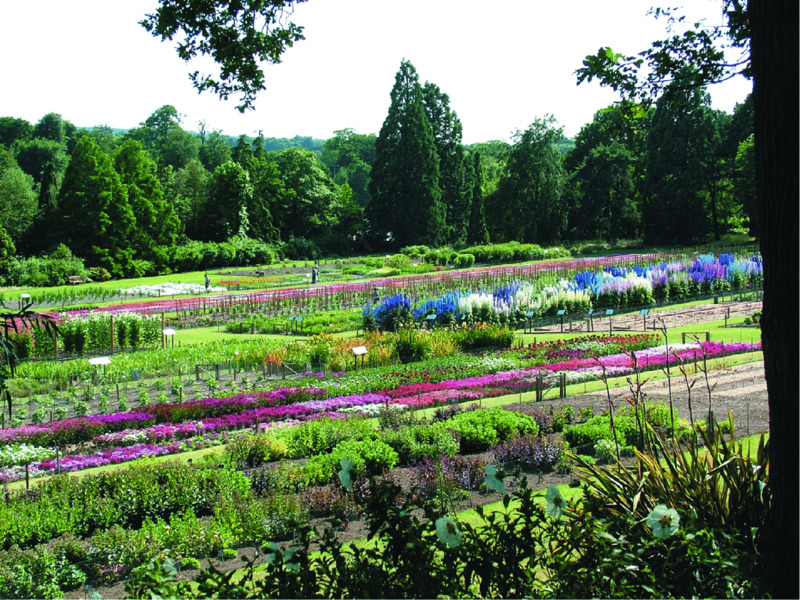
Figure 24.5 The Trials Field at the RHS Garden, Wisley. Photograph courtesy of Ali Cundy, Royal Horticultural Society.
Private and small commercial gardens
The role of private gardens and specialist nurseries in the education of the public and in conservation of cultivated plants should not be underestimated. Plant Heritage (www.nccpg.com) coordinates over 650 National Plant Collections, managing around 38,000 cultivars. Many of these collections can be visited on open days organised by the National Gardens Scheme and National Gardens Scheme Scotland, and are listed in their Yellow Books. As well as these specialist collections the specialist nursery trade in the United Kingdom is of great importance in disseminating plant cultivars and species. The Plant Finder, a book originally compiled and published by Tony Lord in 1987 but now managed by the Royal Horticultural Society and available both in print and online, lists over 75,000 plant types for sale from over 450 nurseries.
Universities and independent research institutes
In addition to the work of botanic and horticultural society gardens, much significant research on horticultural science is carried out by universities, land-based industries colleges and independent research institutes in many countries. Most have associated gardens and trial plots, and their research is usually based on both field and laboratory experiments. The independent UK research institutes currently pursuing science of direct or indirect relevance to horticulture are listed in Table 24.4, together with an outline of the scope of their work. All are also involved in education and training.
Table 24.4 Independent (i.e. non-university) plant research institutes in the United Kingdom currently undertaking research directly or indirectly relevant to horticultural science. Note that the Institute of Grassland Research (IGER) and Warwick Horticultural Research International (HRI), both until recently independent research institutes, have now been incorporated, respectively, into the University of Aberystwyth (as the Institute of Biological, Environmental & Rural Sciences – IBERS) and the University of Warwick (as the Warwick Crop Centre), respectively.
| East Malling Research (EMR): New Road, East Malling, Kent ME19 6BJ Website: http://www.emr.ac.uk |
| EMR has a broad programme of research focused on top fruit (apples and pears), stone fruit (plums ands cherries), soft fruit (raspberries and strawberries), hops, broadleaved timber trees (principally wild cherry and ash) and woody ornamentals (especially elderberry, buddleia and lilac). There are also smaller projects on Rosaceae genomics and biodiversity of broadleaved timber trees. |
| Forest Research: Alice Holt Lodge, Farnham, Surrey GU10 4LH; Northern Research Station, Roslin, Midlothian EH25 9SY; and Forest Research in Wales, Edward Llwyd Building, Penglais Campus, Aberystwyth, Ceredigion, SY23 3DA Website: http://www.forestresearch.gov.uk |
| Forest Research undertakes research on all aspects of trees found in the United Kingdom. Its interests include the evaluation of woodland resources, land regeneration, woodland biodiversity, tree diseases, and tree improvement and genetics. |
| John Innes Centre (JIC): Norwich Research Park, Colney, Norwich NR4 7UH Website: http://www.jic.ac.uk |
| JIC undertakes fundamental and strategic research on: plant metabolism, nutrition and secondary product synthesis; the cellular basis of growth and development; the genetic and molecular genetic basis of variation relating to plant breeding; the causes of, and resistance to, diseases and abiotic stress. Model plants are used in experiments, but all work is related to legumes, brassicas and cereals of commercial importance. The separate Sainsbury Laboratory focuses on the cellular and genetic basis of plant–pathogen interactions. |
| Rothamsted Research (R Res): Harpenden, Hertfordshire AL5 2JQ Website: http://www.rothamsted.ac.uk |
| R Res undertakes research related to the sustainable management of agricultural land and sustainable production practices that reduce reliance on non-renewable inputs. The research is organised into five centres: bioenergy and climate change; crop genetic improvement; soils and ecosystem functions; sustainable pest and disease management; and mathematical and computational biology. |
| Stockbridge Technology Centre Ltd: Cawood, Selby, North Yorkshire YO8 3TZ Website: www.stockbridgetechnology.co.uk |
| Applied research on such topics as: protected cultivation of edible and ornamental crops; cultivation of vegetables, bulbs, outdoor flowers and soft fruits; and integrated pest management. |
| The James Hutton Institute (JHI): Craigiebuckler, Aberdeen AB15 8QH, and Invergowrie, Dundee DD2 5DA, UK |
| Website: http://www.hutton.ac.uk/ |
| The JHI developed from the merger of the Scottish Crop Research Institute (SCRI) and Macaulay Land Use Research Institute in 2011. The famous tayberry originated at SCRI, but later research and breeding was on blackberry, blackcurrant and raspberry, with some work also on blueberry, gooseberry and strawberry. Research on all aspects of potato genetics, diseases, quality and crop management feed into a commercial breeding programme, which now falls in the Enhancing Crop Productivity and Utilisation research theme. |
Much of the fundamental science underlying horticultural practices has also been developed in universities around the world. Departments and institutes of horticulture, plant science, biology, environmental biology, genetics and soil sciences, among others, often with associated botanic gardens and/or experimental gardens, have made major contributions to our understanding of: how plants evolved, grow and develop; plant genetics, molecular biology and breeding; plant diversity, taxonomy, ecology and conservation; soil structure, composition, diversity and management; and the interaction of plants with, and the control of, pests and pathogens. The universities, of course, have a major role in the training of professional horticulturists and plant scientists.
Field trials are an essential component of most practical horticultural research, whether in research institutes or universities. Basic information on how to lay out a field trial to ensure that the results obtained from it are statistically significant is provided in Fig. 24.6. Further information may be obtained from the sources listed in ‘Further reading’.

Figure 24.6 The layout of field trials and experiments. When considering the layout of field trials or experiments, or recording their results, it is important to minimise errors arising from faulty design or incorrect analysis. Simply bisecting a plot and allocating different treatments to the two halves does not give valid results because of possible variations in, for example, soil conditions and aspect across the plot. The correct procedure is to use a randomised layout, with as many replications of each treatment as possible. A very simple layout is shown here, incorporating three replicates (Rows 1–3) and three treatments (Boxes A–C). Each row contains all three treatments, which should be allocated randomly to the rows using tables of random numbers. More complex designs use larger numbers of replicates or treatments. Also, the individual plots may be split up. Recording of results should ideally be carried out without the recorder knowing the treatment, to prevent recorder bias. Finally, the results should be analysed using the proper statistical procedures (see ‘Further reading’).
Conclusion
Much important scientific research relevant to horticulture is being carried out in botanic gardens, horticultural society gardens, universities and publicly funded research institutes worldwide. Such organisations also have significant roles in the breeding of plants of horticultural importance, conservation, education and the training of professionals. Readers are referred to the annual reports and websites of botanic gardens, Botanic Gardens Conservation International, and individual universities and research institutes for further information on current publications.
Further reading
- Ballard, P. (2003) An Oasis of Delight: The History of the Birmingham Botanical Gardens, 2nd edn. Brewin Books, Studley, Warwickshire.
- Bofinger, V.J. & Wheeler, J.L. (1975) Developments in the Design and Analysis of Field Experiments. Commonwealth Agricultural Bureau, Slough.
- Bown, D. (1992) 4 Gardens in One: The Royal Botanic Garden Edinburgh. HMSO, Edinburgh.
- Convention on Biological Diversity (2011 onwards) Global Strategy for Plant Conservation. Available at: https://www.cbd.int/gspc/about.shtml
- Cubey, J. & Merrick, J. (eds.) (published annually) RHS Plant Finder. Dorling Kindersley, London.
- Desmond, R. (1995) Kew: The History of the Royal Botanic Gardens. The Harvill Press, London.
- Drayton, R. (2000) Nature’s Government: Science, Imperial Britain, and the Improvement of the World. Yale University Press, Newhaven, CT.
- Elliott, B. (2004) The Royal Horticultural Society. A History 1804–2004. Phillimore & Co., Ltd, Chichester.
- Faherty, W.B. (1989) A Gift to Glory In: The First Hundred Years of the Missouri Botanical Garden (1859-1959). Harris & Friedrich, Washington, USA.
- Garbari, F., Tomasi, L.T. & Tosi, A. (1991) Giardino dei Semplici: L’Orto Botanico di Pisa dal XVI al XX Secolo. Cassa di Risparmio, Pisa.
- Heywood, V.H., Heywood, C.A. & Wyse Jackson, P.S. (1990) International Directory of Botanical Gardens, 5th edn. Koeltz Scientific Books, Köenigstein, Germany.
- Kate, K.E. (1999). The Commercial Use of Biodiversity. Earthscan, London.
- Mead, R. & Carnow, R.N. (1983). Statistical Methods in Agriculture and Experimental Biology. Chapman & Hall, London.
- Minelli, A. (1995) L’Orto Botanico di Padova, 1545–1995. Marsilio Editori, Venezia.
- Peterson, R.G. (1994) Agricultural Field Experiments, Design and Analysis. Marcel Dekker, Inc., New York.
- Rix, M. (2006) Cambridge University Botanic Garden. Curtis’s Botanical Magazine, 23, Part 1 (special part), 1–144.
- Walter, K.S. & Gillett, H.J. (1997) IUCN Red List of Threatened Plants. IUCN – International Union for Conservation of Nature, Gland, Switzerland, and Cambridge, UK.
- Walters, S.M. (1981) The Shaping of Cambridge Botany. Cambridge University Press, Cambridge.
Authors and affiliations
Written for the second edition by David S. Ingram, now Honorary Professor, Science, Technology and Innovation Studies, University of Edinburgh, and Lancaster Environment Centre, University of Lancaster; updated for the third edition by Alastair Culham, Associate Professor and Curator of the Herbarium, University of Reading, and David S. Ingram.